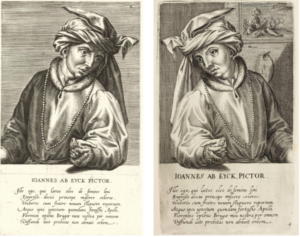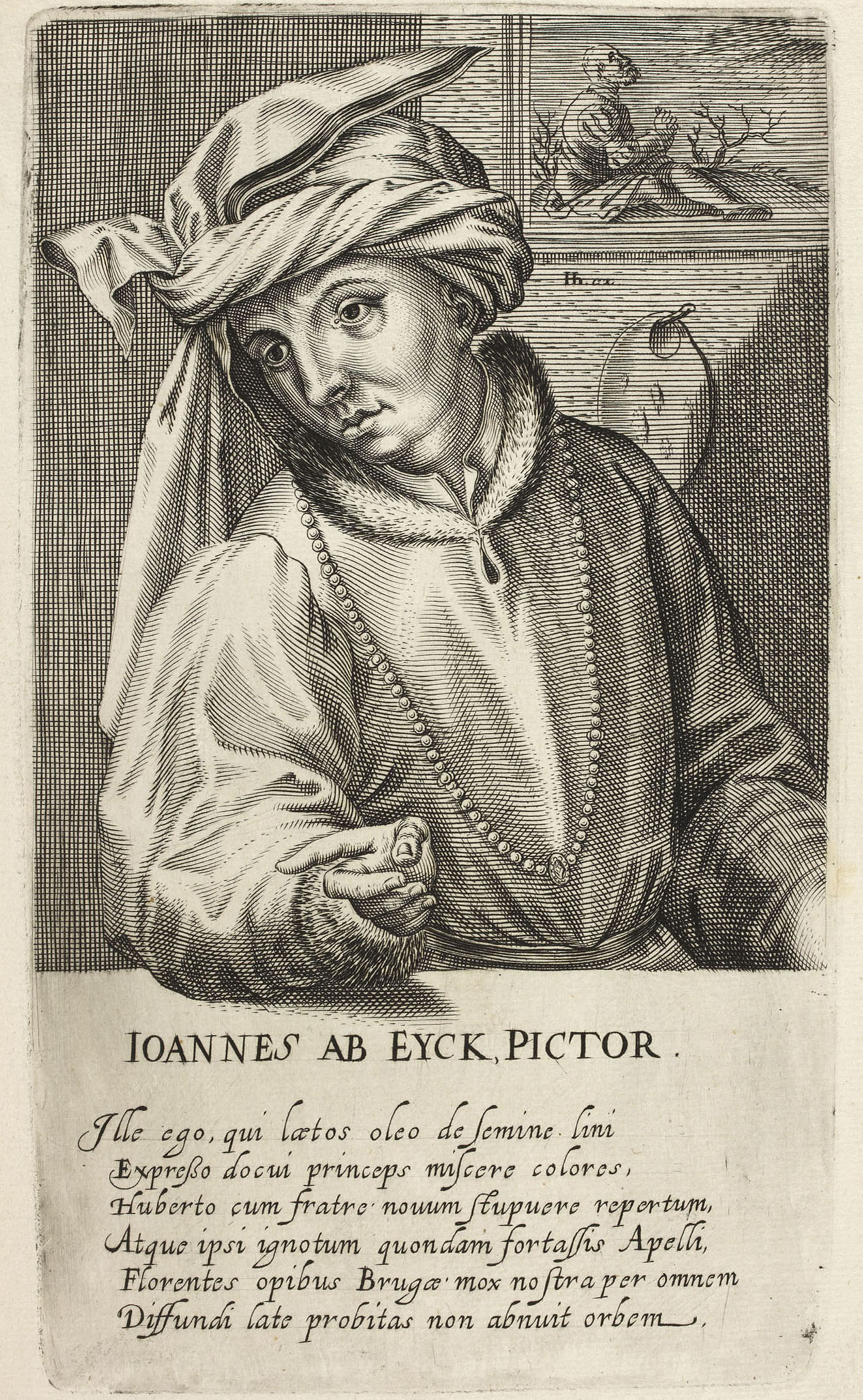Engraving
Signed ‘Hh ex.’ by Hendrick Hondius
Copy in reverse direction to Cock 1572 engraved Pictorum
20.7 x 11.9 cm
Transcription of Inscription [Lampsonius]:
IOANNES AB EYCK, PICTOR.
Ille ego, qui laetos oleo de semine lini
Expresso docui princeps miscere colores,
Huberto cum fratre novum stupuere repertum,
Atque ipsi ignotum quondam fortassis Apelli,
Florentes opibus Brugae mox nostra per omnem
Diffundi late probitas non abnuit orbem.
Translation of Inscription [Lampsonius]:
Jan van Eyck, painter
I am he who 1 first taught to mix joyful colours from the pressed oily seed of flax, 2 with my brother Hubert. Bruges, flourishing with wealth, was astounded by this new discovery, perhaps unknown in the past to Apelles himself. Soon afterwards our uprightness 3 did not refuse to be spread widely through the whole world.
Hollstein 1994 no. 83
Karel Van Mander’s biography of Jan van Eyck
Grove Art Online biography
 View the 1572 print
View the 1572 print
View both prints side by side
Footnotes:
- “ille ego qui” – For the ultimate source of this phrase, see the apocryphal opening lines to the Aeneid, “ille ego qui quondam gracili modulatus avena…”
- “oleo de semine lini”: the same expression in the poem for Cornelis Engebrechtsz.
- This for “probitas”. It is hard to see quite what the author means, but “probitas” to my knowledge always has a moral sense.


